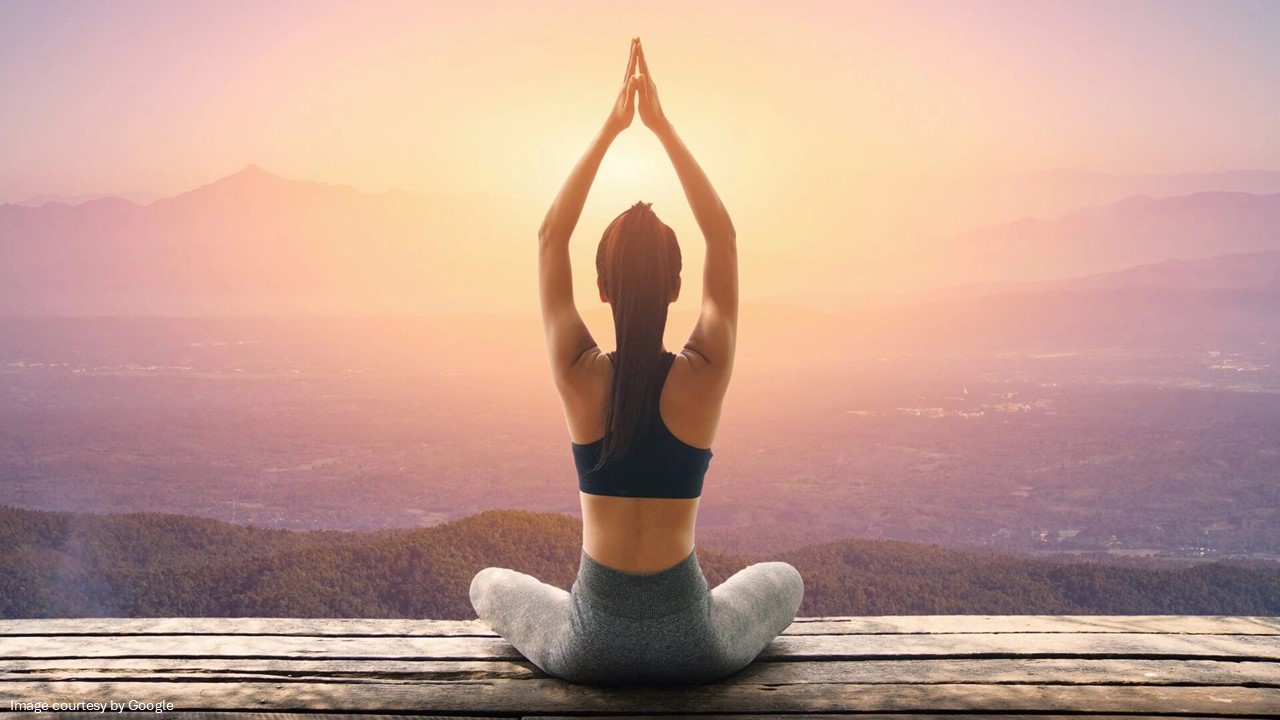Certain yoga poses can be practised to promote joint health and pain-free movement. The article explains the health connection between yoga and joint pain, how yoga can help alleviate it, and the science behind this connection. You will also get to learn the best yoga for joint pain that supports and strengthens your joints.
Health benefits of yoga
How does yoga and joint pain correlate, and can yoga help joint pain? No doubt, joint pain is one of the most common health issues that many people experience in their lives. Whatever the reason may be, whether it is arthritis, ageing, joint injury, or lifestyle factors, living with swollen, stiff, and painful joints can be extremely tough. The discomfort not only interferes with mobility but also affects the overall quality of life. Treatment options include medications, non-pharmacological approaches such as self-management, physical or occupational therapy, weight loss, joint assistive aids and surgery.
The role of self-management and increasing physical activity takes precedence in managing joint pain. It is in this context that yoga has been applied and tested for joint pain caused by arthritis. Several research studies have demonstrated the benefits of yoga in managing arthritis and chronic joint pain. While yoga is not a cure for joint pain, numerous studies and controlled clinical trials have confirmed that it can complement conventional treatment and improve body functioning.
What is yoga?
Yoga is a spiritual discipline with the primary goal of fostering harmony between the mind and body. The secondary goals are to enhance physical health, promote mental well-being, and foster emotional balance. It is an art of living healthy with a science behind it. Yoga is an inner science comprising a variety of methods through which an individual can experience the union between the mind and the body to achieve self-realisation.
How can yoga help joint pain?
Yoga encompasses a range of movements, postures, meditation, and breathing techniques. The combination of these practices enhances flexibility, strengthens muscles, and reduces inflammation, making it particularly effective for individuals with joint-related disorders. Moreover, yoga improves tolerance towards pain by altering one’s perspective towards life.
Keep reading to know more about how yoga benefits people with joint pain:
-
- Enhances flexibility and range of motion – Yoga postures gently stretch joints and muscles, which prevents stiffness and improves your ability to move the affected body part freely. A gentler style of yoga practice, performed at a slower pace and involving less intense activity, can be particularly relaxing and help enhance the range of motion in the spine, shoulders, knees, and hips, making regular activities easier. Moreover, one of the big benefits of practising gentle yoga is that it does not require a lot of flexibility and strength.
- Provide strength to supporting muscles – Strong muscles around the joints act as a shock absorber, preventing direct pressure on the joints. Consistent practising yoga for joint pain relief to improve balance and strengthen muscles without putting unnecessary stress on sensitive areas. The poses of yoga for joint pain relief may include the Warrior Pose and the Bridge Pose, which help build strength by engaging the relevant muscles.
- Relieves stressed muscles and reduces inflammation (swelling) – Yoga has been proven to help alleviate chronic stress, which can ultimately contribute to inflammation and exacerbate joint pain, particularly in individuals with arthritis. There is evidence that proves the benefits of yoga on the levels of circulating cortisol (a stress hormone) and inflammatory markers, helping to reduce inflammation. This has a great impact on overall joint health.
- Improve blood circulation – Yoga asanas improve blood circulation, ensuring the steady supply of nourishing oxygen and nutrients vital for repair and maintenance. Increased blood flow also helps reduce swelling in the affected areas.
- Increases mind-body awareness – Living with extreme pain can prompt people to engage in strenuous exertion. Here comes the role of yoga in relieving joint pain. One notable aspect of yoga is that it can promote body awareness, which involves a heightened understanding of one’s own body, its needs, and the sensations it experiences. Numerous research studies in the US have found a positive association between yoga and body awareness. Yoga helps individuals understand their limits and move in ways that protect rather than strain their joints. With numerous pieces of evidence, it is not difficult to conclude that yoga practices rejuvenate the mind and body, promoting overall mind-body fitness.
- Supportive in weight management – Practising yoga consistently can help you burn calories while also increasing your muscle mass and tone. Yoga for joint pain helps alleviate joint discomfort, enabling you to practice more and engage in your daily activities with greater ease and comfort. Moreover, the holistic mind-body approach improves many of the causes of weight gain. These are just a few of the many benefits of practising yoga regularly. Additionally, one of yoga’s benefits is that it enhances mindfulness of the body and awareness of body sensations, which can help you maintain healthy eating patterns.

Yoga poses for joint pain relief
Yoga is a beneficial practice for those seeking to nurture and safeguard their joint health. However, the question arises: Which yoga is best for joint pain? While yoga poses are beneficial for your health, there are specific poses designed to alleviate tension, enhance joint mobility, and promote optimal joint health. Check out the best yoga for joint pain here:
Mountain pose (Tadasana) – Mountain pose helps increase strength and mobility in your thighs, hips, ankles, and feet. Improving posture and balance relieves unnecessary pressure on joints.
Warrior pose (Virbhadrasana) – This pose strengthens legs, hips and core muscles, improving stability and balance. Opening the chest and hips relieves stiffness and tension in the joints.
Triangle pose (Trikonasana) – This practice stretches the hips, spine, hamstrings, and groin to improve flexibility and mobility. This pose opens the chest, releasing tension and enhancing breathing.
Bridge pose (Setu Bandhasana) – The Bridge Pose is extremely effective in relieving stiffness throughout the body. When practising regularly, strengthening the back, hamstrings, and glutes, and correcting poor posture, stretching the spine helps relieve tension and improve flexibility.
Forward fold (Paschimottanasana) – This pose is specifically recommended for arthritis patients because it is an ideal movement for those with stiff muscles. It not only strengthens your hips and knees but also enhances flexibility in the rest of your leg.
Bound angle pose (Supta Baddha Konasana) – By opening the hips, the Bound angle pose improves circulation with minimal strain.
Seated spinal twist (Ardha Matsyendrasana) – The classic twist involves the entire spine and also a deep stretch for the outer hip area. It offers numerous benefits, including improving spinal posture, relieving stiffness in the back and hips, and stimulating the digestive organs to help alleviate stomach issues. Stretching of the spine causes relaxation, reduces stress, and boosts overall vitality by improving blood circulation.
To find out which yoga is best for joint pain, it is always a wise decision to meet a yoga trainer who is well-trained in practising simple to intense yoga postures and positions. Practicing yoga under the guidance of a yoga expert helps reduce the chances of performing incorrect poses.
Takeaway!
Yoga involves the practice of the mind and body in the living process of human beings, promoting peace with oneself, within society, and with nature. It has spiritual roots, helps individuals realise true happiness, freedom or enlightenment. Yoga involves stretching of the muscles, which offers physical relief of symptoms around the painful joints. Yoga is helpful in reducing stress, which is known to exacerbate joint pain.
Nurturing joint health through yoga can greatly help prevent chronic issues associated with arthritis and ageing. When practising, always remember to listen to your body’s signals and be sure not to push yourself beyond your limits or cause strain. You can also learn to practice the best yoga for joint pain with a yoga expert, which helps you learn aspects like maintaining a steady breath while practising the poses and enhancing relaxation in each posture.



